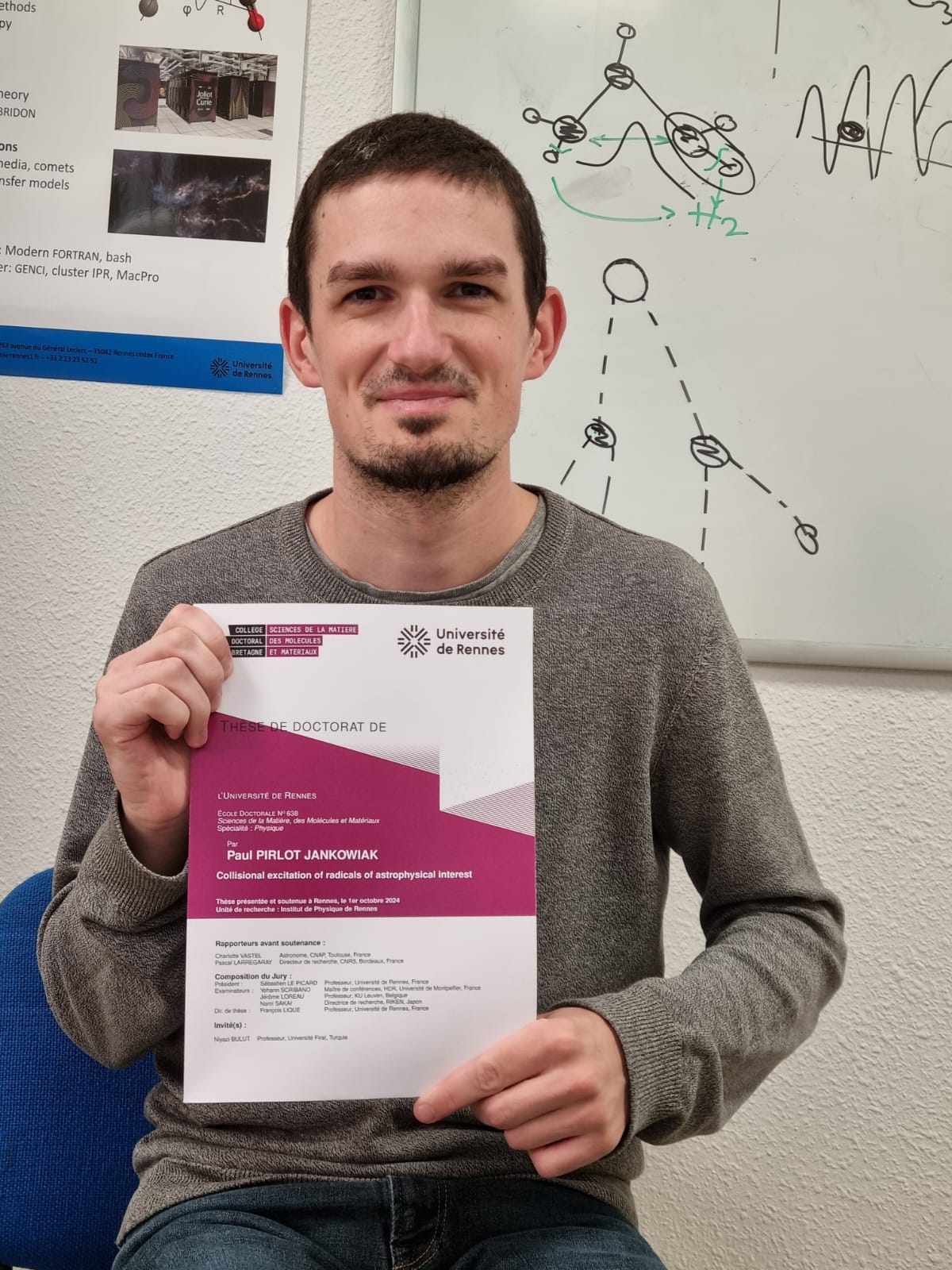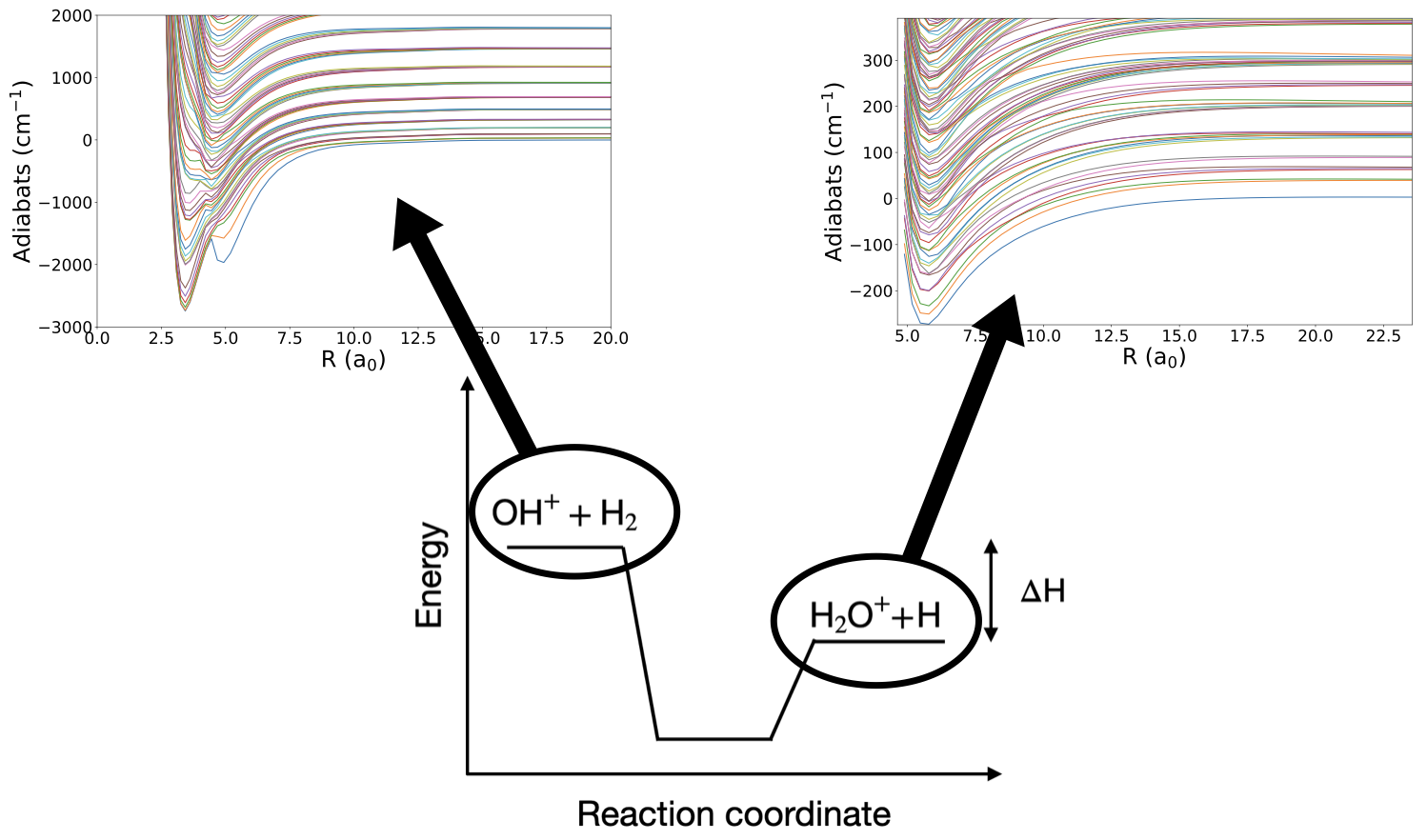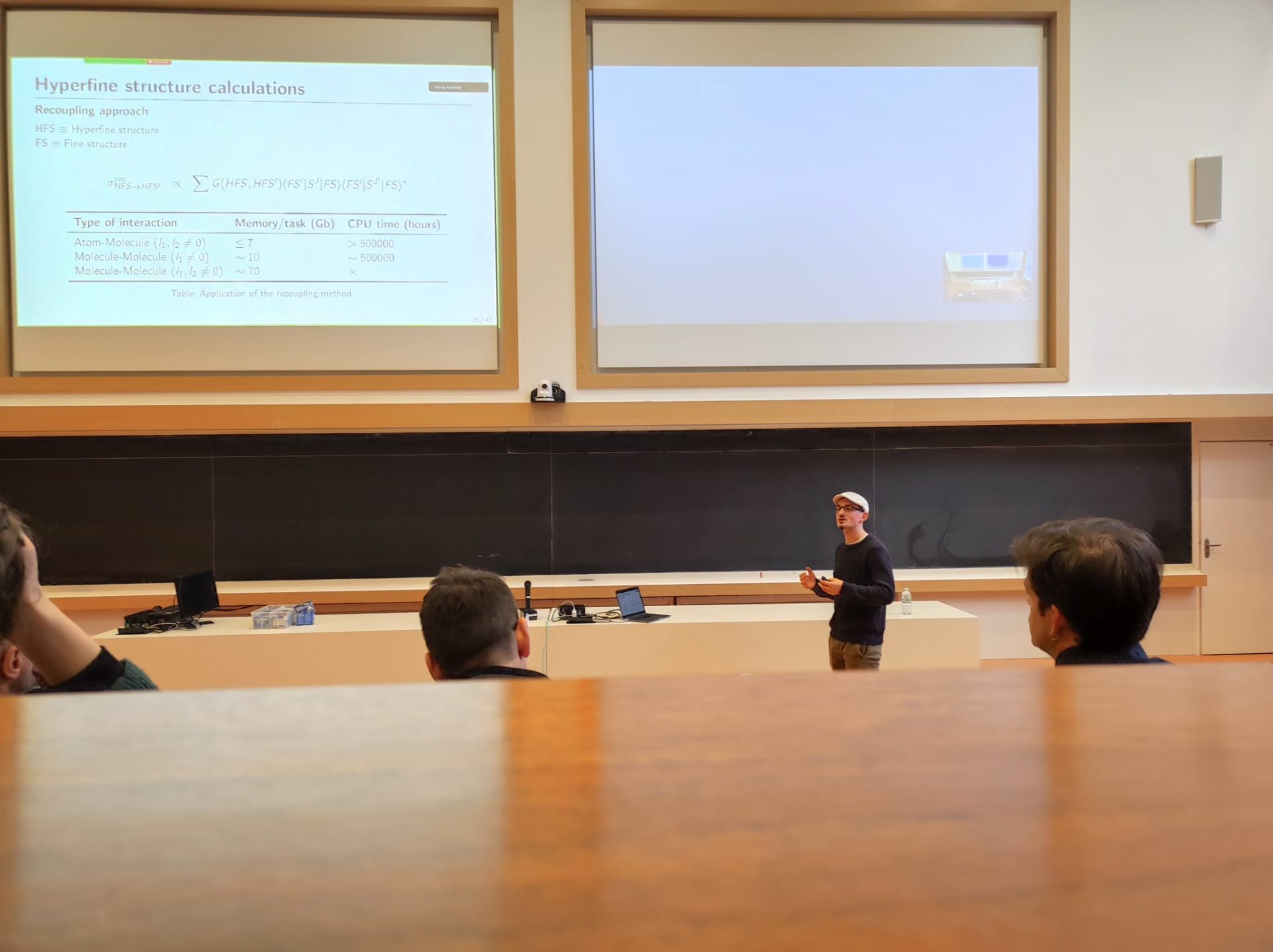by Paul Pirlot Jankowiak, on
Paul Pirlot Jankowiak thesis

Paul is now the 3rd member of the Collexism team to become PhD!
Paul's thesis started in October 2021 under the supervision of F. Lique and ended on Tuesday October 1st with a wonderful PhD defense.
The president of the jury was Sébastien Le Picard, Professor at the University of Rennes and researcher at the Institute of Physics of Rennes, France.
The examiners were:
- Yohann Scribano, Assistant professor, HDR, University of Montpellier, France
- Jérôme Loreau, Professor, KU Leuven, Belgium
- Nami Sakai, Chief scientist, RIKEN, Japan
The referees were:
- Charlotte Vastel, Astronomer, CNAP, Toulouse, France
- Pascal Larregaray, Chief scientist, CNRS, Bordeaux, France
Niyazi Bulut, Professor, University of Firat in Turkey, was invited to the defense.
Thesis work
During his PhD, Paul Pirlot Jankowiak worked on collisional excitation in reactive systems, including collisions with molecular hydrogen.
He had a particular interest in the OH+-H2 system, where the exothermic and barrierless reaction leads to competition between inelastic and reactive processes; and for which no methodology able to handle such problem for low temperature applications.
He published 4 scientific peer-reviewed papers over the 3 years of his thesis as the first author.

Collisional excitation of radicals of astrophysical interest - P. Pirlot Jankowiak

The precise determination of physical and chemical conditions in astronomical environments is inferred through the interpretation of molecular spectra. With recent advancements in observational capabilities, such as the fully operational Atacama Large Millimeter/submillimeter Array (ALMA) and the recently launched James Webb Space Telescope (JWST), astronomy has entered a golden age. The detection of new molecules is accelerating at an exponential rate. However, accurately modeling these molecular spectra requires knowledge of the population distribution among the energy levels of the chemical species involved. This task is straightforward when local thermodynamic equilibrium (LTE) is achieved. Unfortunately, in most astrophysical environments, the density is too low to maintain LTE, making it essential to obtain both radiative and collisional properties of the observed molecules to correctly interpret observational spectra. While radiative properties, characterized by Einstein coefficients, can be determined by experimental measurements, collisional data are predicted by quantum calculations and are system-specific. These data are typically limited to small molecules (comprising only a few atoms) interacting with light collision partners, such as atomic hydrogen, helium, or molecular hydrogen. Some classes of molecules, particularly radicals, present additional challenges due to the presence of fine, and eventually hyperfine structures in their energy spectra, which significantly complicate collisional calculations. Moreover, these molecules are highly reactive, leading to competition between inelastic and reactive collisions in cold interstellar environments. Currently, no established methodologies exist for treating these processes at a state-to-state level.
This thesis has two main objectives. First, it aims to explore state-of-the-art methods and test their limits in quantifying the collisional excitation of radicals in astrophysical environments, where the implementation of methodologies for hyperfine structure calculations was necessary. Second, it seeks to develop a statistical method to quantify the competition between inelastic and reactive collisions for low-temperature applications at a state-to-state level.